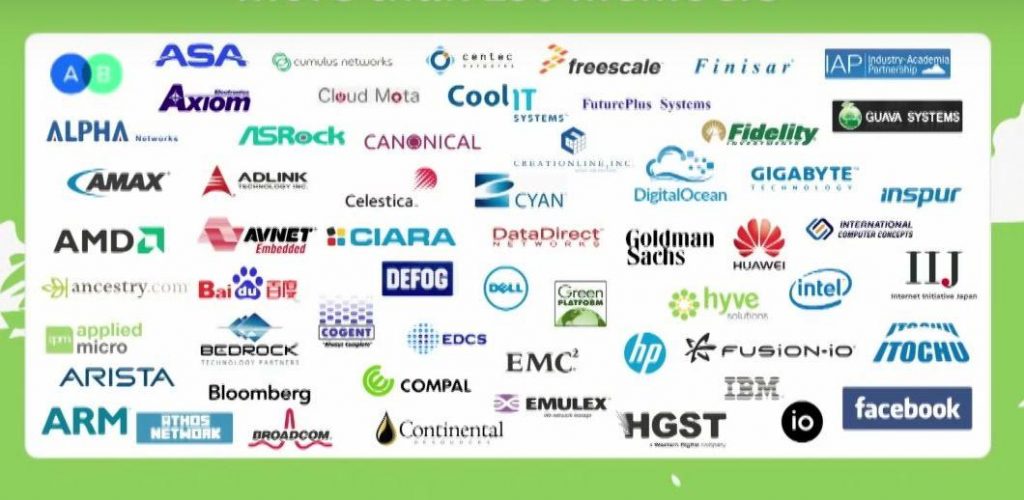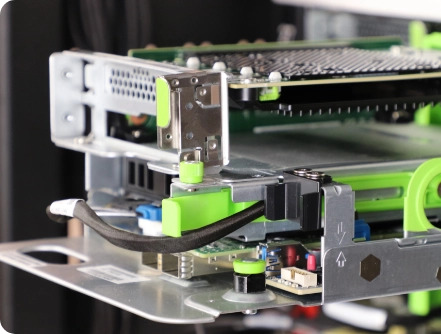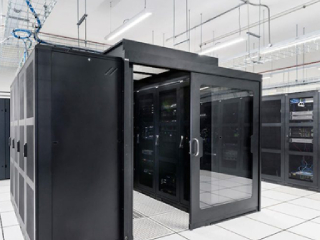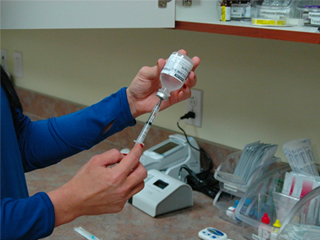In the year 2009, a lot was going on in the area of data and computers. One of the most significant shifts was the widespread usage of free websites such as Google and Facebook. As these services attracted millions and billions of users, the amount of big data collected skyrocketed, putting strain on firms’ infrastructure. At this time, Facebook seized control of the situation. After assigning a team of engineers to the task of developing better server hardware, Facebook had a data center two years later that, according to the company, was 38% more productive, used an immensely lower amount of power, and saved 24% on costs. Following the project’s success, Facebook’s Jonathan Heiliger determined that open sourcing the company’s hardware designs were the best way to preserve and manage the future of server computing. By making their designs public, Facebook, along with all other firms that run massive servers, can now tap from the collective intelligence of numerous major corporations to generate wide-scale uniformity and efficiency in the IT and data industries. The Open Compute Project (OCP) was born as a result of this.
A collaborative community focused on reinventing hardware technology to efficiently meet the expanding demands on computer infrastructure.
Open compute project (OCP) also involves the standardization of scalable, adaptable, and efficient hardware.
Understanding what OCP is and how it works is critical for data center managers, administrators, or consultants, as well as IT or data industry professionals. In this post, we’ll go over the basic structure of OCP, as well as its benefits, drawbacks, and applications in various sectors.
An Industry Worth A Billion Bucks

Photo Credit: plannet.com
It is where people may contribute their creativity and ideas to construct scalable computing gear and servers that adapt to changing demands. Contributing firm members do, in fact, assist in the development of commodity hardware.
We think that sharing ideas, specifications, and other intellectual property publicly is the key to enhancing innovation and lowering complexity in technology components. We’re reimagining IT infrastructure by building commodity hardware that’s more efficient, adaptable, and scalable. We’re breaking free from the chains of proprietary, one-size-fits-all gear by working together.
On the outside of the foundation, there is a location where businesses may obtain hardware servers that help them save money and address a variety of problems. Functional and adaptable to a wide range of businesses, the OCP members, excluding the founders, have sold over 2 billion in hardware to firms outside the project by 2018, demonstrating that the hardware is excellent.
The Pros and Cons Of Open Compute Project (OCP)?
Pros
OCP offers services for Hardware Management, Networking, High-Performance Computing, Open Systems Firmware, Rack and Power, Security, Server, Storage, and Telco, with a focus on tier-two cloud service providers and non-hyperscale data center manufacturers. This is a large-scale data and IT infrastructure solution with several advantages, focusing on operations that run hundreds or thousands of racks.
OCP’s three focuses:
-
Save Energy
One of the most pressing issues that the project set out to address was the quantity of energy required to power such large-scale data centers. To do this, the OCP hardware reduces power supply waste by using taller stacks that allow for larger heatsinks. Heat is directed away from the devices by these heatsinks, allowing them to cool to ideal operating temperatures.
-
Save Materials
When it comes to new data center construction, open compute project focuses on software rather than hardware. Following the principle of less is more, there are no faceplates, expansion slots, mounting screws, or other components, which means no more agonizing over product discontinuations or tracking down replacement parts.
-
Save Costs
Taking into account the time it takes to install each rack and maintain it, OCP has worked to reduce installation time by roughly 250%, as well as speed up server component repairs performed without the need for tools. There is also flexibility since firms may engage with a variety of manufacturers rather than just one, helping them to avoid being trapped into high-priced providers.
Cons
As with anything excellent, there are some drawbacks. However, it’s important to note that when it comes to OCP, the worries are just that: worries.
-
Safety
When it comes to a major sector like this, security and second-hand goods are high priorities. A two-fold issue: first, the simplicity with which it may be hacked because it is a standardized hardware system, and second, the safe purchase of genuine OCP hardware. Both issues are being addressed by the board, and founding leaders have declared that supply chain security is a priority.
-
Availability
When it comes to a major sector like this, security and second-hand goods are high priorities. A two-fold issue: first, the simplicity with which it may be hacked because it is a standardized hardware system, and second, the safe purchase of genuine OCP hardware. Both issues are being addressed by the board, and founding leaders have declared that supply chain security is a priority.
-
Integration
The seamless integration of current software with OCP hardware is perhaps the most pressing challenge. Understandably, the initiative has collaborated with Microsoft, one of its board members, to create hardware racks and servers that are software-friendly. They’re also working on a firmware initiative to guarantee that their hardware is compatible with the latest software.
The Benefits of Open Compute Project (OCP) For Companies

Global corporations are using OCP in many ways, from joining as members to just purchasing the hardware.
Cisco, the networking behemoth, has joined the OCP effort, for example. Cisco’s CEO opted to join the initiative as OCP set its eyes on the top-of-rack switch to replace it with a new SDN design. Cisco joined as a type of response, not to utilize the goods, but to analyze, observe, and learn. Cisco wants to be a part of the process so that they can offer every conceivable option to their clients. When we look at AT&T, we can see that the mega-cellular data business is using OCP to develop its own white box router specs. AT&T has a wider reach because of OCP’s resources and cooperation.
“As more technologists from other sectors join our community, we are generating and refining additional designs, making it feasible for more organizations to migrate from their old, proprietary solutions to OCP gear.” The initiative, which is still growing, is not limited to hardware and services. They’re looking into OCP firmware solutions, as well as a Future Technologies Symposium, as noted briefly above. The project has swiftly established itself as a valued asset in the data and IT business, and it has quickly risen to the top.
The need for OCP will only grow as the world of big data and organizations that operate on massive servers expands. Getting your business ready for OCP may appear to be a daunting endeavor, but if approached with caution, it might be the hardware and server solution you’ve been looking for.
An Open Compute Ready Data Center
AKCPro Server
AKCPro Server is a software program that allows operators to watch data from monitoring devices (gateways and sensors) and, if required, manage and regulate specific parts of a monitoring system.
AKCP is the world’s leader in SNMP-based Data Center Monitoring Solutions. With over 200,000 installations worldwide, you can count on us to monitor and protect your Data Center. AKCP wired and wireless devices are engineered to offer a diverse collection of features at peak performance while conserving power and lowering costs.
Main Features
- Real-time gathering of data from sensors and monitoring equipment is to analyze, process, evaluate, and display.
- Monitoring and regulation within a system.
- Automated and concurrent activation of several actions or processes.
- Overview of all monitoring & measurement points.
- Display the status of a monitored location and all current measurements from monitoring devices.
Wireless Tunnel Gateway (WTG)
True to the commitment to excellence of the open compute movement. AKCP sensors require a gateway to communicate with. The Wireless Tunnel Gateway Server collects and stores data from up to 30 Sensors. In small installations, the Gateway Server is used as a standalone monitoring system without the need for a cloud server or internet connection. The embedded user interface of the server provides customizable desktops, mapping, and graphing. Alerts are sent via SMS, E-mail, and SNMP Traps. All of the features found in the AKCP sensorProbeX+ user interface are available on the Gateway-Server to deliver highly efficient, scalable services.
Custom Options
WiFi: If the WTG is placed in an area you don’t have an accessible Ethernet cable for network connection, use the WiFi option to connect with your IP network. WiFi can also function as a hotspot for direct access without a wired or wireless network.
Cellular: For sites that have no internet connection available, the cellular data modem will transmit all your sensor data over the cellular network. In standalone installations, the cellular modem can also be used for sending SMS alerts. With the internal batteries, the WTG will remain powered long enough to alert of power outages via SMS.
GPS: Geolocate your WTG and monitor locations on the AKCPro Server world map. Geofence the device and know when it has moved out of a defined area.
Modbus: RS485: RS485: Connect your WTG to 3rd party Modbus devices for monitoring generators and other industrial equipment.
Basic Expansion Bus: The BEB port allows you to add SPX+ style BEB units for additional dry contact inputs, or wired sensors.
Reference Links:
https://www.bmc.com/blogs/open-compute-project/
https://circleb.eu/about-open-compute/
https://developers.facebook.com/blog/post/2021/09/07/eli5-open-compute-project-advancing-hardware-technologies-through-open-source/




